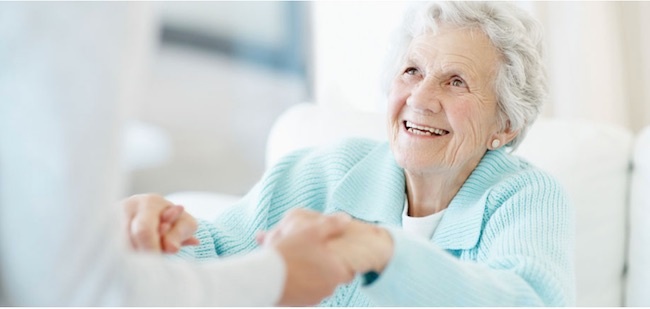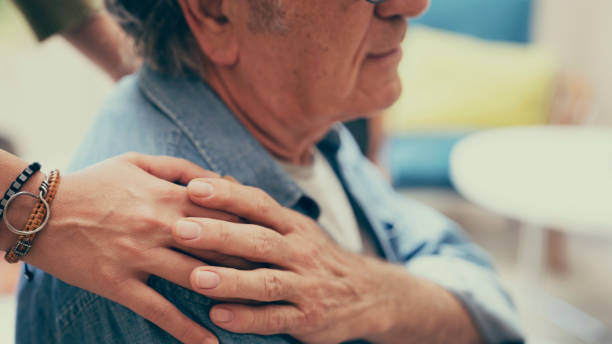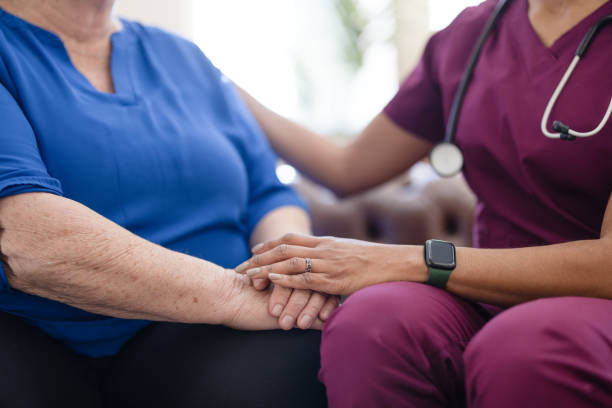A fall in the home for an older adult can result in a serious, potentially life-threatening injury. If your parent has already had a fall scare, here are a few tips for creating a safe environment that will help minimize the chances of another fall.

As our parents grow older, it can be hard to know when to step in and start supporting them in their daily living: adult children are, understandably, very wary of offending a parent or stepping on their toes. But when a crisis does occur, such as Mom or Dad suffering a severe fall in their own home, it's time to heed the signals that there are some steps to be taken that can ensure your mom or dad's safety.
Your parent's fall may have been due to mobility issues caused by Parkinson’s or a lack of strength as they recover from surgery. Perhaps it was caused by cognitive impairment, decreased hearing, or balance and vision brought on by diabetes. Sometimes, a fall results from the age-related difficulty in everyday tasks that used to come quickly. Whatever the cause, there are specific steps you can take to make your parent’s home a safer place to live. By making a few modifications and simple lifestyle choices, you and your parent will minimize the risk of a fall, putting off another hospital visit for as long as possible.
What to Do When a Parent Keeps Falling: 8 Ways to Prevent Falls at Home
- De-Clutter
Many older people have been living in the same home for many decades. As a result, they may have built up an excess of furniture and belongings that add considerable clutter. Could you make a point of decluttering your parent's home and eliminate piles of unnecessary objects, boxes of items sitting idle on the floor, or even low coffee tables or electrical chords. Creating a clear path to the most used areas of the house is the first step to preventing falls in the home.
- Minimize Trip Traps
Once the path underfoot is cleared of clutter, it's time to make it smooth and risk-free. Could you look over the flooring in your parent's home? Rugs can have tricky, trip-prone edges and pose a slip risk if placed on a polished floor, so tape these down. Smooth surfaces can become slippery when wet, so non-slip mats in bathtubs and bathroom floors are essential, while tiles and floorboards that have moved from their original position or are sticking up should be replaced.
- Single-Level Living
It's only sometimes possible, but the ideal living situation for an older person with mobility or balance issues is one without stairs since they pose such a significant and noticeable risk. Adapting the house to accommodate your mom or dad's needs on the ground floor is ideal. If not, minimizing the need for many trips up and down the stairs will keep the risk of falling low.
- Installations
Install grab bars and handles in as many parts of your mom or dad's home as you think will be helpful. Prominent places where grip bars should be installed include the bathroom to assist in getting in and out of the shower or tub and beside the toilet. Also, consider putting an extra rail on the stairs so your parent can use both hands going up and down and in hallways or areas without alternative, sturdy support. This might involve enlisting the help of a local handyperson, but it is a relatively simple and inexpensive modification and is one of the first things to do to make the home a much safer place.
- Dress Code
Please make sure your parent's clothing choices at home aren't causing unnecessary obstructions. Long hemlines on skirts or nightdresses, trailing pajama trousers, or sweeping robes with undone belts could all contribute to a fall that can be easily avoided. You can also consider buying Adaptive Clothing.
- Safe Shoes
Similarly, unsafe footwear is an entirely avoidable cause of many accidents in the home. Please encourage your parent to wear shoes instead of comfortable slippers, since they are often too slippery to wear safely around the home. In particular, slippers with no backs are pretty dangerous to wear. You can just look for house shoes with good grip that fit closely, with no trailing laces.
- Lighten Up
Ensuring adequate lighting around your parent's home will make it a much safer environment. Bright, overhead lighting in all rooms, particularly in hallways and landings, means that your mom or dad isn't trying to navigate in low light. This is especially important if your parent's sight is starting to deteriorate. Keeping the hallways well-lit at night will make getting to where they are going easier.
- Taking Time
Talk to your parent about how they move around, particularly getting in and out of bed and in and out of chairs. It might seem obvious, but a startling number of preventable falls happen as an older adult rises too quickly from a position of rest. Taking time to maneuver from sitting or lying to standing and not rushing, in general, will help reduce fall risks.
Minimize Fall Risks by Hiring Home Care
If you have made the adjustments above and are still concerned that your mom or dad is not safe living independently in their own home, even when acting as a caregiver, consider getting some Home Care help to minimize the risk further. A Home Care aide can be with your mom or dad at those high-risk times of the day - bathing, mornings and evenings, when they're likely to need to use the stairs, and overnight if night time waking and wandering are proving an issue.
As well as providing the peace of mind that comes from knowing somebody is with your mom or dad when needed, a Home Care aide can also help with daily activities such as light housekeeping and meal preparation, reducing the number of ways in which your parent might hurt themselves.
They can also keep a check on your parent’s medication management, and their well-being, to ensure Mom or Dad is not rushing to find pain relief or drowsy from sleeping pills, which can also heighten the risk of falling.
Find out how Ezra Home Care can help keep your elderly parent safe and comfortable at home by contacting our friendly and experienced caregiver team.


 Tweet
Tweet
 Share
Share



